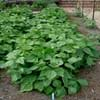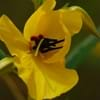Life Span
Annual
Perennial
Type
Vegetable
Bulb or Corm or Tuber
Origin
Central America, South America
North America, Europe, Africa, Asia
Types
Bush Beans, Pole Beans
Tiger lily, Columbia lily, Woody lily
Habitat
Cultivated Beds
meadows, Shady Edge, Woods
USDA Hardiness Zone
Not Available
2-8
AHS Heat Zone
Not Available
8-1
Sunset Zone
A1, A2, A3, H1, H2, 1a, 1b, 2a, 2b, 3a, 3b, 4, 5, 6, 7, 8, 9, 10, 11, 12, 13, 14, 15, 16, 17, 18, 19, 20, 21, 22, 23, 24
21,22
Habit
Vining/Climbing
Upright/Erect
Flower Color
Lavender
White, Yellow, Red, Green, Purple, Gold, Pink, Rose, Peach, Burgundy, Bronze
Flower Color Modifier
Bicolor
Bicolor
Fruit Color
Purple
Yellow green, Sandy Brown
Leaf Color in Spring
Green, Purple
Green, Dark Green
Leaf Color in Summer
Green
Light Green
Leaf Color in Fall
Green
Several shades of Green
Leaf Color in Winter
Not Available
Light Green
Leaf Shape
Oval
Long Narrow
Plant Season
Spring, Summer, Fall
Spring, Summer, Fall
Sunlight
Full Sun
Full Sun, Partial Sun, Partial shade
Type of Soil
Loam, Sand
Clay, Loam, Sand
The pH of Soil
Neutral, Alkaline
Acidic, Neutral, Alkaline
Soil Drainage
Well drained
Well drained
Bloom Time
Indeterminate
Not Available
Tolerances
Drought
Drought
Where to Plant?
Container, Ground, Pot
Container, Ground
How to Plant?
Seedlings
From bulbs, Seedlings, Transplanting
Plant Maintenance
Medium
Medium
Watering Requirements
Do Not over Water, Requires regular watering, Water evenly
Average Water Needs, Never Over-water, Requires regular watering
In Summer
Lots of watering
Lots of watering
In Spring
Moderate
Moderate
In Winter
Average Water
Average Water
Soil pH
Neutral, Alkaline
Acidic, Neutral, Alkaline
Soil Type
Loam, Sand
Clay, Loam, Sand
Soil Drainage Capacity
Well drained
Well drained
Sun Exposure
Full Sun
Full Sun, Partial Sun, Partial shade
Pruning
Remove damaged leaves, Remove dead branches, Remove dead leaves
Remove damaged leaves, Remove dead leaves, Remove dead or diseased plant parts
Fertilizers
5-10-10 fertilizer
All-Purpose Liquid Fertilizer
Pests and Diseases
Alternaria Leaf Spot, Anthracnose, Aphids, Armyworm, Bacterial Blight
Red blotch
Plant Tolerance
Drought
Drought
Flower Petal Number
Single
Single
Foliage Texture
Coarse
Not Available
Foliage Sheen
Matte
Not Available
Attracts
Not Available
Deers, Insects, Moths
Allergy
Not Available
Headache
Aesthetic Uses
Not Available
Beautification, Bouquets, Landscape Designing, Showy Purposes
Beauty Benefits
Beautiful Skin
Not Available
Environmental Uses
Fixes Nitrogen
Air purification
Medicinal Uses
Cancer, Diuretic, Homeopathy, Hypotensive, Miscellany
Cough, Fever, Menstrual Disorders, Stomach pain, tuberculosis, Upset stomach, Wounds
Part of Plant Used
Leaves, Seedpod, Seeds
Bulbs, Flowers, Root, Seeds
Other Uses
Used for making brown dye, Used in biomass, Used in in reviving woollen fabrics
Can be made into a herbal tea, Employed in herbal medicine, Used As Food
Used As Indoor Plant
Yes
Yes
Used As Outdoor Plant
Yes
Yes
Garden Design
Container, Edible, Herb, Vegetable, Vine
Alpine, Container, Cutflower, Feature Plant, Mixed Border, Wildflower
Botanical Name
PHASEOLUS vulgaris 'Purple King'
LILIUM canadense
Common Name
String bean, Field bean, French bean
Meadow lily
In Hindi
String Bean
कनाडा लिली
In German
Bohne
Kanada Lily
In French
Haricot vert
Lily Canada
In Spanish
String Bean
Kanada Lily
In Greek
Αμπελοφάσουλο
Kanada Lily
In Portuguese
Feijão de corda
Kanada Lily
In Polish
Fasolka szparagowa
Kanada Lily
In Latin
Gloria Bean
Canada Lily
Phylum
Magnoliophyta
Magnoliophyta
Class
Magnoliopsida
Liliopsida
Family
Fabaceae
Liliaceae
Clade
Angiosperms, Eudicots, Rosids
Angiosperms, Monocots
Subfamily
Faboideae
Lilioideae
Number of Species
Not Available
Not Available
Importance of String Bean and Canada Lily
Want to have the most appropriate plant for your garden? You might want to know the importance of String Bean and Canada Lily. Basically, these two plants vary in many aspects. Compare String Bean and Canada Lily as they differ in many characteristics such as their life, care, benefits, facts, etc. Every gardener must at least have the slightest clue about the plants he wants to plant in his garden. Compare their benefits, which differ in many ways like facts and uses. The medicinal use of String Bean is Cancer, Diuretic, Homeopathy, Hypotensive and Miscellany whereas of Canada Lily is Cough, Fever, Menstrual Disorders, Stomach pain, tuberculosis, Upset stomach and Wounds. String Bean has beauty benefits as follows: Beautiful Skin while Canada Lily has beauty benefits as follows: Beautiful Skin.
Compare Facts of String Bean vs Canada Lily
How to choose the best garden plant for your garden depending upon its facts? Here garden plant comparison will help you to solve this query. Compare the facts of String Bean vs Canada Lily and know which one to choose. As garden plants have benefits and other uses, allergy is also a major drawback of plants for some people. Allergic reactions of String Bean are Not Available whereas of Canada Lily have Headache respectively. Having a fruit bearing plant in your garden can be a plus point of your garden. String Bean has showy fruits and Canada Lily has no showy fruits. Also String Bean is not flowering and Canada Lily is not flowering . You can compare String Bean and Canada Lily facts and facts of other plants too.





